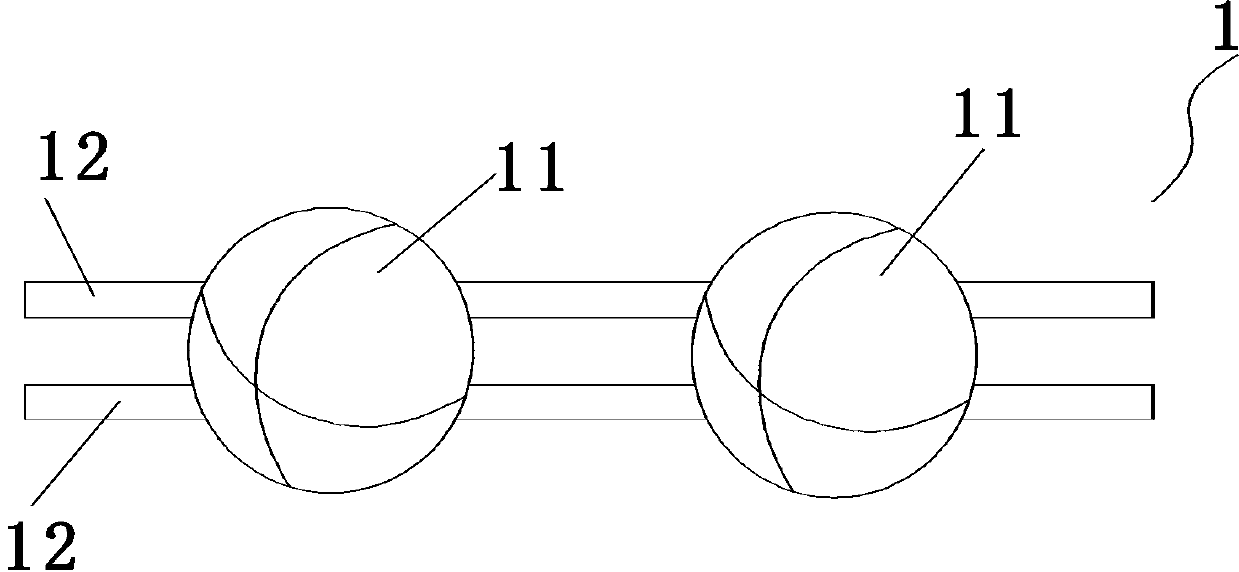Laver breeding method
A cultivation method and technology of seaweed, applied in the field of cultivation of laver, can solve the problems of long time required, high labor intensity, low efficiency, etc., and achieve the effects of saving time and manpower, simple and convenient operation, and low cultivation cost
- Summary
- Abstract
- Description
- Claims
- Application Information
AI Technical Summary
Problems solved by technology
Method used
Image
Examples
Embodiment Construction
[0030] The specific embodiment of the present invention is described in detail below in conjunction with accompanying drawing:
[0031] First, the mechanism employed in the method is introduced. refer to figure 1 and figure 2 , in this specific embodiment, the laver cultivation mechanism that adopts comprises: be fixed by two floating balls 11 and two crossbars 12 and form floating ball bearer 1, wherein, two crossbars 12 are arranged in parallel, and two floating balls 11 can Arranged separately; the breeding net 3 is horizontally installed with some floating balls along the length direction; the front floating ball bearing 4 and the rear floating ball bearing 5 at the front end and the rear end of the breeding net 3 are respectively tied with the first cables 6 and 5 on the left and right sides. The second cable 7; the free ends of the first cable 6 and the second cable 7 are tied together and connected with the third cable 8; the other ends of the two third cables 8 can ...
PUM
 Login to View More
Login to View More Abstract
Description
Claims
Application Information
 Login to View More
Login to View More - R&D
- Intellectual Property
- Life Sciences
- Materials
- Tech Scout
- Unparalleled Data Quality
- Higher Quality Content
- 60% Fewer Hallucinations
Browse by: Latest US Patents, China's latest patents, Technical Efficacy Thesaurus, Application Domain, Technology Topic, Popular Technical Reports.
© 2025 PatSnap. All rights reserved.Legal|Privacy policy|Modern Slavery Act Transparency Statement|Sitemap|About US| Contact US: help@patsnap.com


